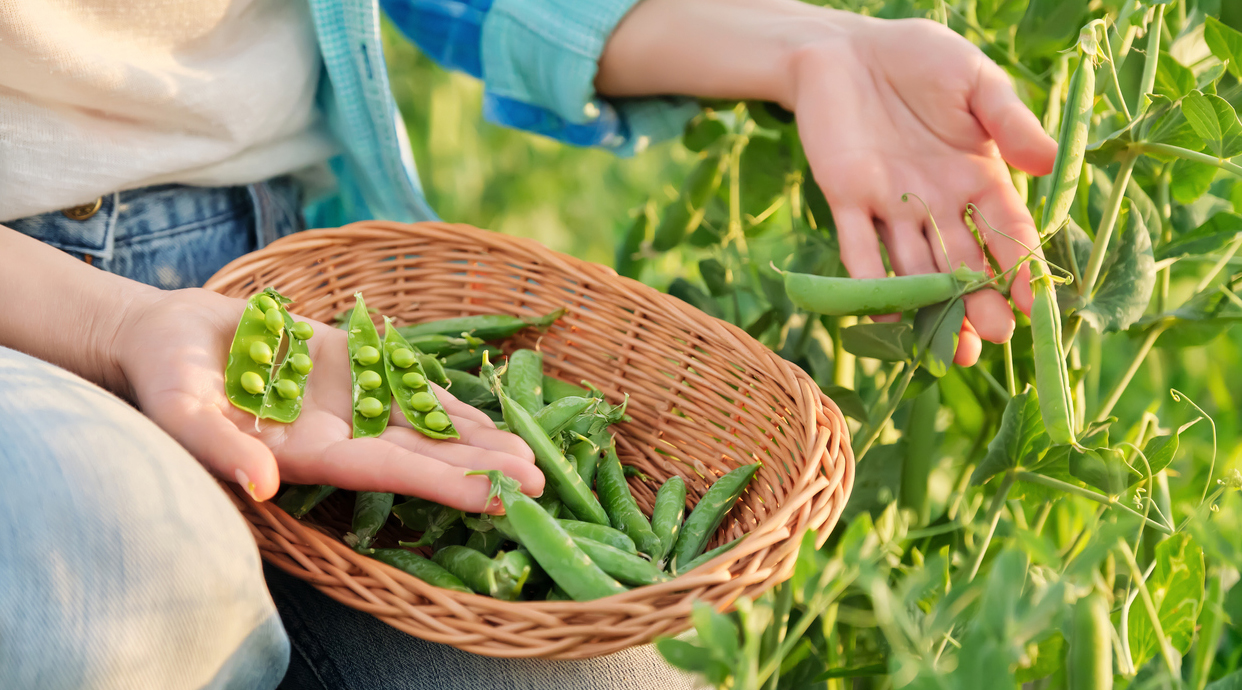Peas

Health Power
Green peas promote overall health with seven vitamins, eight minerals and other phytonutrients. Vitamin K, crucial for bone health, is most abundant in peas. Some of it converts to vitamin K2 and is part of bone mineralization. Deficiency in K2 hinders mineralization and makes osteoporosis more likely. Incompletely researched, folate and vitamin B6 may contribute to bone health by blocking the buildup of homocysteine, a molecule that interrupts proper bone matrix formation. Vitamin K and folate also help the cardiovascular system. Vitamin K is essential for blood clotting, while folate and vitamin B6 lower homocysteine, which may reduce damage to arterial walls and reduce the risk of cardiovascular disease. Green peas also contain B vitamins that help break down carbohydrates, fats and proteins for energy. Iron is crucial for blood cell formation and oxygen delivery to muscles. Vitamins C and A protect many types of cells in the eye, liver, immune system, adrenal glands, connective tissue and the circulatory system.
Vitamin and Mineral Content
Vitamins – K, C, B1 (Thiamin), B9 (Folate), A, B6 (Pyridoxine), B3 (Niacin) and B2 (Riboflavin)
Minerals – Manganese, Phosphorus, Magnesium, Copper, Iron, Zinc and Potassium
Disease Prevention
Green peas are linked with reducing cell damage that causes osteoporosis, lymphoma, leukemia, and cancers of the lung, colon, cervix, breast, prostate and ovary. Eating green peas regularly with other nutrient-rich fruits and veggies promotes overall health and helps prevent many adverse health conditions.
How to Grow
Peas are one of the oldest cultivated vegetables. Eating them fresh, right after picking, makes a big difference in flavor. Peas do not need much done to the soil for healthy growth. They produce their own nitrogen and need very little fertilizer. Peas are frost hardy, but do not deal well with heat. They slow down when temperatures go above 70˚F and stop growing above 75˚F. Early varieties will do well in sandier loam that warms up quickly. Later varieties may benefit from heavier soil to keep them cool. Pick a sunny spot for early varieties and part shade for later varieties. Make sure soil is well drained. Sow seeds outdoors in early spring and also in fall for mild climates. Make successive sowings to get a continuous yield. Seeds should be planted in drills 2 inches deep and roughly 2 inches apart. If planting a vine type, plant in double rows spaced 6-8 inches apart with roughly 3 feet between each double row. Support each plant with a stick roughly 4-5 feet long. Keep soil moist, but make sure not to over water. Harvest (2-3 weeks after blossoming) as close to cooking as possible.
Insect Control
Common pea pests are birds, pea moths, mice, pea and bean weevils and aphids. To deter birds, install netting around the crop. (If you don’t mind, sacrifice a little bit of the yield.) Pea moths lay larvae (maggots) on plants during flowering. If attack is severe, dust with rotenone. Use this as a last resort, as rotenone kills beneficial insects. See your local nursery for pheromone traps. Mice are not usually a big problem, but cats are great to have around if they are. Pea and bean weevils are not a problem unless they attack seedlings. Dust sparingly with rotenone. Spray aphids with strong stream of water or plant marigolds to attract ladybugs.
Tips
Mulching between rows with well-aged compost or manure helps hold moisture, deter weeds and nourish the plant, especially if soil is depleted. Pea vines are very sensitive, so handpick weeds if needed.





